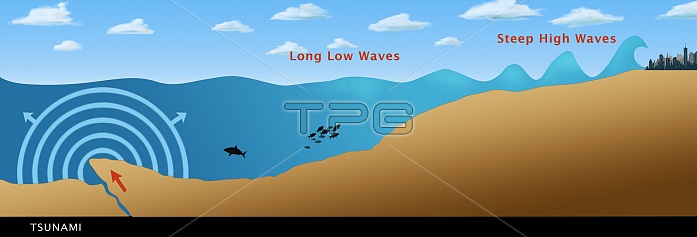
Illustration of a tsunami formed from an earthquake (crack in the ocean floor), showing the variation in wavelength and height as the tsunami reaches shallow water. In the open ocean, tsunamis are very shallow with a very long wavelength, and can travel extremely fast, up to 1000 kilometers per hour. However, when the wave reaches shallower water, the waves are slowed and pile up, reducing the wavelength and increasing their height. Unlike normal waves, tsunamis do not break and then recede, the initial wave is followed by an enormous mass of water, which causes the majority of the damage. Tsunamis are caused by a displacement of the seabed, for instance by earthquakes, landslides or volcanic eruptions.
| px | px | dpi | = | cm | x | cm | = | MB |
Details
Creative#:
TOP22091009
Source:
達志影像
Authorization Type:
RM
Release Information:
須由TPG 完整授權
Model Release:
N/A
Property Release:
No
Right to Privacy:
No
Same folder images:

 Loading
Loading